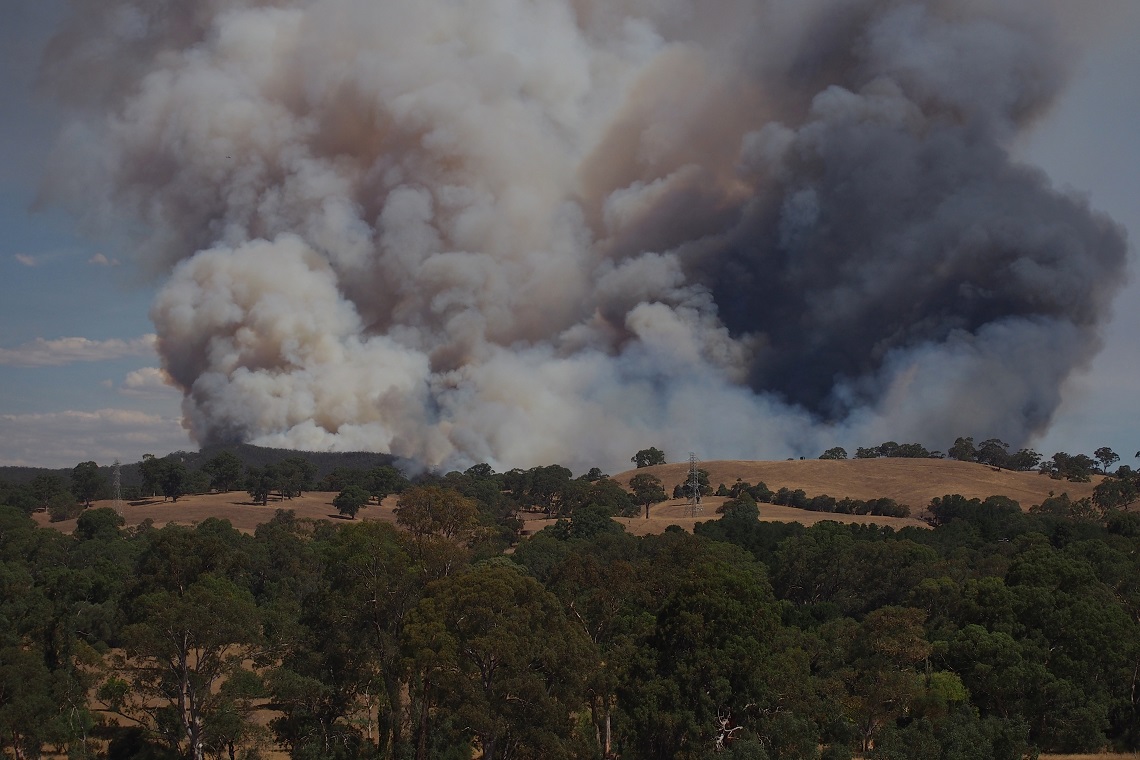Australian researchers have recently completed a range of projects spanning three-and-a-half years which aims to reduce losses from smoke-impacted fruit and wine by assessing a range of treatments and developing early stage predictions of smoke taint risk.
Wine Australia Chief Executive Officer Andreas Clark said the findings from the teams at the Australian Wine Research Institute (AWRI), La Trobe University and Agriculture Victoria built on Australia’s international reputation for smoke taint research.
“Australia is the leading nation when it comes to understanding smoke effects on wine and winegrapes. It’s a very complex area of research, but our long-running and consistent studies have developed a solid knowledge base that can be called on in wine regions during fire events,” Clark said.
“The innovative developments from the project have broadened the mitigation and treatment toolbox for grapegrowers and winemakers and have laid groundwork for further vital research to support our sector.”
AWRI Managing Director, Dr Mark Krstic, said the research teams’ findings proved vitally important during the 2020 vintage following widespread fires across Australian wine regions.
“We started this project in 2016 and were able to evaluate several mitigation options and remedial treatments in the vineyard and winery,” Dr Krstic said.
“The timing of the fires earlier this year meant that there was an urgent need to deliver this information to our community and we were able work closely with winemakers to facilitate adoption of tailored techniques such as fining with activated carbon or dilution with unaffected wine for ameliorating smoke-affected juice and wines.
“In addition, insights and experiences with the sensory evaluation of experimental wines were instrumental in setting up effective methods for industry-led sensory panels.”
Professor Ian Porter led the research program at La Trobe University and Agriculture Victoria, which determined how much smoke in a vineyard will cause tainted fruit and also established an early warning remote sensing network that enabled taint risk predictions.
“Through this research, we determined that it takes more smoke to cause smoke taint than was originally thought and we are close to setting smoke taint thresholds,” Professor Porter said.
“Bushfires present a much higher risk of smoke taint than controlled burns, due to the larger volume of smoke and differing atmospheric conditions such as high winds.”
A number of smoke detection units were used in combination with the existing EPA networks to monitor bushfires in the winegrowing regions of Tasmania, NSW and Victoria from 2018 to 2020. The researchers worked with local wine producers to determine the risk of taint according to the measurements determined by the smoke sensors.
Professor Porter added: “This experience demonstrated the value that a smoke detector network can provide as an early warning system to alert grapegrowers to the risk of smoke taint, based on the smoke dose measured. We also monitored over 40 controlled burns and showed that they generally were not a concern for smoke taint.”
The research teams also tested a number of commercially available coating products for their ability to reduce the uptake of smoke compounds by grapes in the vineyard. While most actually increased the uptake of smoke taint compounds one of the tested products showed promising results for grapegrowers.
“We tested a number of different products for use in the vineyard and chitosan showed potential as a barrier coating on grapes. It is also already approved for use in wine processing, which means there are fewer technical barriers to its use as a barrier product,” Tim Plozza from Agriculture Victoria said.
The projects are critical to supporting Australia’s wine sector and received funding from Wine Australia and the Australian Government Department of Agriculture, Water and the Environment as part of its Rural R&D for Profit program.

